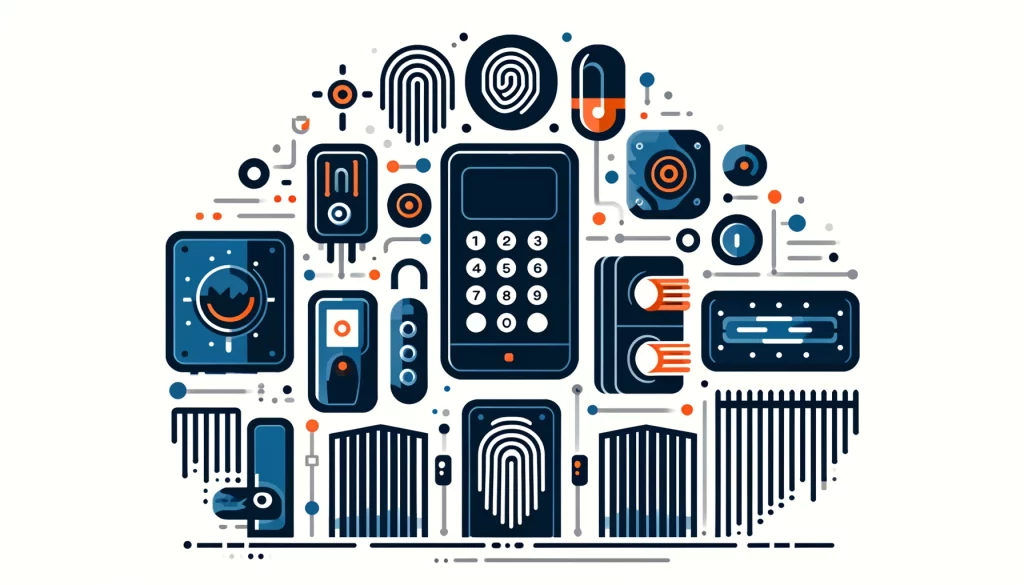
Access Control Systems

Cyber threats and data breaches are increasing. Therefore, It is crucial to use access control systems to protect your company’s sensitive information. These systems help in keeping the information safe. Security measures are crucial to ensure that only authorized individuals can access specific information, materials, and areas within a company.
This article will discuss the basic ideas behind access control systems, it will also cover the components of these systems. Additionally, it will explain how access control systems are important for safeguarding your company’s data.
Definition of Access Control Systems
Access control systems are security measures that control who can access resources in a computer environment. The company designed these measures to lower its risk. They verify that users are who they say they are and have the required permissions to access certain data or areas.
Divide access control systems into two main categories: physical and logical. Its measures can restrict entry to campuses, buildings, rooms, and physical IT assets. On the other hand, network access control determines which users can connect to computer networks, system files, and data.
The Four Key Elements of Access Control Systems
To successfully set up an access control system, you need to understand four main components. These components are the master station, the site controller, the entry control unit, and the user input device.
The master station is the central hub. It communicates with site controllers. It updates access codes, schedules, and instructions for the system.
The site controller manages local access at remote locations, keeping track of who has access to which doors at specific times. The entry control unit receives access codes from user input devices. It then sends these codes to the site controller or master station for verification. Key pads or card readers attach to walls or doors to send access codes to the entry control unit.
Real-World Examples of Access Control Systems
Access control systems come in various forms, each tailored to meet the specific needs of an organization. Some common examples include:
- Server-based access control software needs software licenses, server maintenance, and an IT team. Companies with multiple locations should use it, as they need to set up servers at each site.
- Biometric door readers use scanners to identify individuals based on unique physical traits like fingerprints, iris, or facial recognition. While they offer a high level of security, they are often the most expensive type of door security reader.
- Mobile credentials: With this access control method, a user’s smartphone serves as the key. Mobile credentials are usually app-based. Users can unlock doors by tapping a button in the app, making it a convenient and secure way to access.
Access Control Models: DAC, MAC, and RBAC
We can classify access control systems into three main models: Discretionary (DAC), Mandatory (MAC), and Role-based (RBAC). DAC is the least restrictive model, where business owners have control over all users’ access rights and permissions.
While it offers flexibility, it is not ideal for commercial and business security. MAC, on the other hand, is best suited for businesses that require a high level of security and privacy. In this model, the administrator has complete control over access rights and security clearance.
RBAC is the most widely used control mechanism, as it aligns with every employee’s position and needs. RBAC restricts any user attempting to access data outside their scope, ensuring that data remains secure.
Best Implementation Practices
To effectively implement access control systems, organizations should follow these best practices:
- Conduct a thorough risk assessment to identify potential vulnerabilities and prioritize security measures.
- Clearly define access control policies and procedures, outlining who should have access to specific data and resources.
- Regularly review and update access rights to ensure they align with employees’ current job functions and responsibilities.
- Implement multi-factor authentication to add an extra layer of security, requiring users to provide multiple forms of identification before granting access.
- Educate employees on the importance of data security and their role in maintaining the integrity of control systems.
- Regularly monitor and audit access logs to detect any suspicious activity or unauthorized access attempts.
The Benefits of Access Control Systems
Implementing control systems offers numerous benefits to organizations, including:
- Control systems enhance data security. These systems help minimize the risk of data breaches and unauthorized access. They do this by restricting access to sensitive information.
- Access control systems help companies follow laws like GDPR and HIPAA by keeping data secure and managing access properly. These systems make sure that data is safe and access is managed correctly.
- Increased productivity: By streamlining access processes and reducing the need for manual intervention, control systems can improve employee productivity and efficiency.
- Organizations can customize control systems to meet their needs. This customization makes it easier to manage access rights and permissions.
Conclusion
Companies can keep their sensitive data safe, follow regulations, and reduce the chance of data breaches by using the mentioned measures. Implementing these measures can help companies protect their sensitive data. It can also ensure that they are following regulations. Additionally, it can lower the risk of data breaches.
As technology gets better, access control systems will keep improving. This will help organizations protect their data in a more complicated and difficult environment.
